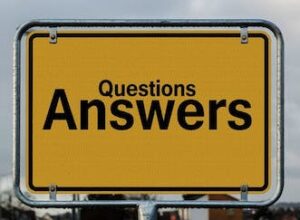A Beginner’s Guide to Endless Inspiration
Want fresh ideas for your writing? This detailed guide is packed with practical tips to inspire beginners and conquer writer’s block! From observations to freewriting, let’s dive into creative ways to ignite your next story or article.

Why Do Ideas Matter in Writing?
Every piece of writing, no matter the genre or purpose, begins with an idea. But finding the right idea can feel like an epic quest, especially when staring at a blank page. Whether you’re penning a novel, crafting a blog post, or even writing a journal entry, ideas give life to your words. They’re the magic behind every story, the spark for every argument, and the heart of every piece of content. However, sometimes, generating ideas can feel like hunting for treasure without a map. The good news? There are tried-and-true methods to spark inspiration and find ideas anywhere, anytime.
This guide is designed for beginners who are ready to turn their idea drought into a creative flood. We’ll cover practical, effective strategies to help you find, nurture, and develop ideas that bring excitement and originality to your writing. Let’s unlock that creative potential together!

Start with Observation: Finding Stories in Everyday Life
Inspiration is everywhere—it’s just a matter of learning how to see it. Observation is one of the most powerful ways to gather ideas because it connects you directly to the world. When you pay attention to the details around you, you start to see stories in everything. Try to focus on:
- People Watching: Humans are endlessly fascinating. Whether it’s someone at a café absorbed in a book, a hurried commuter with a coffee spill, or a family enjoying a day at the park, each person has a story. Ask yourself: What’s their story? What are their dreams or fears? Notice their gestures, expressions, and conversations. These subtle details can serve as inspiration for characters, settings, or even plot points.
- Daily Moments: Mundane routines often hide beautiful little moments. Picture the comforting rhythm of brewing coffee each morning or the joy of a dog sprinting through autumn leaves. Writing about ordinary things in an extraordinary way can resonate with readers and breathe life into your work.
- Nature’s Inspiration: Nature is filled with inspiration—from the changing colors of the sky to the delicate patterns of a spider web. Observing nature can ground your writing, giving it a sense of place and rhythm. Try describing a sunrise or the way a river moves; these scenes can serve as powerful metaphors or vivid backdrops in your writing.
Practical Tip: Carry a small notebook or use a note-taking app on your phone to jot down anything that catches your eye. Even brief, seemingly random notes can later become the foundation of something meaningful.
Ask Questions: Turning Curiosity into Ideas
When you start with a question, you unlock doors to endless possibilities. Questions drive curiosity, spark exploration, and lead you to ideas that are deeper and more engaging. Here are three types of questions that work wonders:
- What if… questions let your imagination go wild? Imagine alternative realities, like “What if humans could see in complete darkness?” or “What if kindness was the most valuable currency?” Such questions can open the door to speculative fiction, new angles in essays, or creative blogs.
- Why… questions encourage you to dig deeper. By asking why people behave a certain way, you can create complex characters, compelling arguments, or unique plot twists. For instance, “Why do people often resist change?” or “Why do we value certain traditions?” can reveal interesting insights and themes for non-fiction and fiction alike.
- How… questions focus on process and change. For example, “How does someone find courage in the face of fear?” or “How do friendships evolve over time?” Questions like these can lead to rich, dynamic stories and guide you in building realistic character development.
Exercise: Pick a random object or person and ask at least five questions about it. Even simple things can yield complex ideas with the right questions.

Freewriting: Unleashing Unfiltered Ideas
Freewriting is a liberating technique that allows you to write whatever comes to mind without judging it. Imagine it as a brainstorming session on paper where you’re free to express anything that pops into your head. Set a timer for 10 minutes and write non-stop—no erasing, no editing, just pure flow. Here’s how to make the most of it:
- Go with the First Thought: If you start with, “I don’t know what to write,” run with it! Describe why you feel blocked, what you wish you could write, or even how you’re feeling. Freewriting works because it lets you bypass your inner critic and access raw ideas.
- Keep Going: Even if you repeat yourself or write nonsense, keep moving. The goal is quantity, not quality. Often, the most valuable ideas come after the initial resistance wears off.
- Review and Highlight: Once you finish, look over what you wrote. Highlight any words, phrases, or ideas that spark something within you. These snippets can lead to full stories, essays, or projects.
Pro Tip: Try freewriting regularly. Many writers use it as a warm-up exercise before diving into serious writing because it loosens up the mind and banishes self-doubt.

Mind Mapping: Visualize Your Ideas
Mind mapping is perfect for visual thinkers. It’s a way to organize your thoughts, see connections, and dig deeper into specific topics. A mind map starts with one central concept and branches out to related ideas, allowing you to explore multiple perspectives. Here’s how to create a dynamic mind map:
- Start with a Main Idea: Write a topic or theme at the center, such as “family,” “adventure,“ or “hope.”
- Branch Out: Draw lines connecting to related ideas. If your central theme is “adventure,“ branches could include “travel,” “risk-taking,” “exploration,“ and “self-discovery.”
- Develop Sub-Ideas: Add details to each branch. For “travel,“ you might add “favorite destinations,” “unexpected mishaps,“ or “traveling solo vs. with friends.”
- Find Connections: Look for overlaps. Maybe “self-discovery“ connects to “friendship,“ or “risk-taking“ ties into “overcoming fear.“ These connections can lead to layered, nuanced ideas for stories, essays, or characters.
Bonus Tip: Use color coding, symbols, or doodles in your mind map to make it more engaging and easy to revisit. This visual appeal can help keep you inspired and focused on your theme.
Brainstorming: Generate Ideas Rapidly
Brainstorming is a classic technique for gathering as many ideas as possible in a short amount of time. The beauty of brainstorming is its speed and spontaneity—you can come up with unexpected gems when you don’t censor yourself. Here’s how to brainstorm effectively:
- Set a Goal: Decide on a number of ideas to aim for (e.g., “I’ll write down 20 ideas in 10 minutes”). This urgency prevents overthinking and encourages creativity.
- Embrace Every Idea: Don’t judge or discard ideas as you write them. Even if an idea seems silly or outlandish, jot it down. Sometimes, the most unusual ideas are the seeds of truly original stories.
- Review and Refine: After brainstorming, go back and circle the ideas that stand out. Consider combining ideas to create something new or looking for patterns to guide your focus.
Pro Tip: If brainstorming alone feels overwhelming, try it with a friend or group. Bouncing ideas off others can lead to unexpected results and inspire fresh perspectives.

Experiment with Prompts: Get Inspired Instantly
Writing prompts are like little keys that unlock creative doors. They can give you a quick jump-start, allowing you to bypass the pressure of coming up with something completely original. Here’s how to make the most of prompts:
- Choose a Prompt That Excites You: Don’t force yourself to use a prompt that feels uninspiring. Look for prompts that resonate with you or stir your curiosity.
- Set a Timer and Write: Treat the prompt like a freewriting exercise. Don’t overthink it—just let the words flow and see where the prompt takes you.
- Reflect and Build: After writing, consider what aspects of the prompt intrigued you the most. Could this small idea expand into a larger piece? Use your response as a foundation to dig deeper.
Examples to Try:
- “Write about a character who receives a mysterious letter.“
- “Describe a place where the rules are completely different.“
- “Imagine waking up with a new ability.”
If none of these work, don’t worry. There are countless prompts available online that cover everything from fantasy to everyday scenarios.

Draw Inspiration from Other Mediums: Find Ideas Beyond Words
Writing isn’t the only art form that inspires! Sometimes, the best ideas come from engaging with other types of media, like music, films, visual art, or even photography. Here’s how to use these sources for inspiration:
Music: Listen to a song and imagine the backstory behind the lyrics. Music can transport you to different places or emotions, offering new angles for stories or scenes. Movies and TV Shows: Observe character development, plot twists, or world-building. Think about how you would write a character differently or what could happen in an unexplored part of the world on screen.
Visual Art: Look at a painting or photograph and ask yourself what’s happening at that moment. Who are the people in the picture? What’s their story? This method can help with vivid descriptions or scene-setting in your own work.
Tip: Keep a notebook handy whenever you engage with other art forms. Jot down any immediate reactions, images, or ideas that come to mind. You might find that inspiration strikes when you least expect it.

The secret to creating great content is to develop your unique way of coming up with ideas. Nothing comes before the quality of your thoughts, and nothing is more important than the quality of the content you create and share.
Like it or not, you are always competing with others for shares and attention. It’s important to remember that different types of content, like infographics, are more likely than others to be reposted and shared, so it’s essential to find your strengths and focus on those kinds of content.
Content?
How you come up with idea content is idea generation is the first step in creating content through the process. We first have to look for counterintuitive and unexpected ways to look at our range. When you walk in a dog’s mind and tell yourself, “How would a dog approach this problem?” that’s counterintuitive.
Writing A Counterintuitive Message
When was the last time you came up with a controversial thought that made people angry and happy?
If you can’t think of a time when you’ve felt strongly about something, there’s an answer.
For rich content? You ask a question and find a solution. Your counterintuitive message must be a new point of view on an existing problem.
You’re not alone in struggling with creating something extraordinary, as tricky as it sounds. Learn More
I’ve prepared for you a few ideas on this topic:
Engage the audience — get them interested and give them a reason to listen. How?
- Describe a scene or a character.
- Tell a story.
- Share a personal experience.
- Relate to a recent event.
- Piggyback on a previous speaker’s remark or theme.
- Point out something important about the audience or the current setting.
- Show a compelling visual image.
- Ask a provocative question.
- State a fact that is troubling, amusing, or remarkable.
- Spell out what’s at stake for your listeners.
- Offer a humorous observation or anecdote.
- Explain your own interest in the topic.
- Tell listeners what the subject has to do with them.
Resource Because Hamilton
Think about an idea relevant to your audience. Break it down into its components. Invite your audience to play a game of “what’s wrong with this picture?”
Don’t be afraid to ask big. It’s challenging to start your blog and build an audience. I’ve been there and know how it is. If you want to be a successful blogger, you need to post regularly and create provocative posts. People’s negativity bias inspires me to build solid and robust content. Learn More
How do you come up with ideas for your social media updates? Let us know in the comments below!

Take Breaks and Recharge: The Power of Stepping Away
It may seem counterintuitive, but taking breaks can actually fuel your creativity. When you step away from writing, your brain continues to process ideas in the background. Often, you’ll return with fresh insights and renewed energy. Here’s how to make the most of breaks:
Go for a Walk: Walking can be a powerful tool for creativity. The rhythm of walking helps clear the mind, while nature or new scenery can inspire fresh ideas.
Engage in Mindful Activities: Try meditating, stretching, or even deep breathing exercises. These activities help you relax, which can often lead to unexpected breakthroughs.
Switch-Up Activities: Sometimes, a little distraction helps your subconscious work through ideas. Engage in a hobby you enjoy, like drawing, cooking, or playing a musical instrument. By focusing on something unrelated, you’re giving your mind the space it needs to come up with new ideas.
Fun Fact: Many famous writers, including Charles Dickens and Virginia Woolf, were known for taking long walks to spark their creativity.
Collaborate with Others: Two Heads Are Better Than One
Collaborating with other people can often lead to ideas and insights that you wouldn’t have discovered on your own. Here are ways to get started:
Idea Exchange: Share a few of your ideas with a friend and ask for their take. Their feedback might open up new angles you hadn’t considered.
Group Brainstorming: Gather a few creative friends and throw out different prompts or themes. One person’s idea can lead to another’s breakthrough.
Character and Plot Building: Try creating a character or storyline with a friend. Each person can add something unique, and you might be surprised at the results.
Collaborating can push you to think outside the box and infuse your ideas with new energy.
Final Thoughts: Keep Curiosity Alive and Ideas Flowing
Writing ideas aren’t rare—they’re just waiting to be noticed. With the techniques in this guide, you’re equipped to find inspiration everywhere, from the depths of your imagination to the world around you. Remember that idea generation is a skill, and like any skill, it grows with practice. As you develop your own methods for finding ideas, stay curious, stay observant, and keep your creative mind open.
Unlock Your Best Writing with Grammarly AI
Getting ideas down on paper is just the first step. Ready to polish those ideas into something brilliant? Let Grammarly AI be your writing companion! Imagine having an intuitive helper that catches mistakes, offers style suggestions, and makes sure your writing flows smoothly—all while letting your unique voice shine. Perfect for beginners and seasoned writers alike, Grammarly AI brings out the best in every sentence. Try it today and see how it turns your good ideas into unforgettable writing!
The answers to those questions are different for every business, but there are a few essential criteria you can use to measure your success. I hope to do with this article gives you some ways to generate content ideas that are unique and timely based on the data and research you collect and review.
GRAMMARLY The World’s Best Automated Proofreader
Start your free trial now! Learn More
With that in mind, let’s look at the tactics I use to create great content: like that?
A meaningful idea is an idea that creates a sense of “Why didn’t I think of that?”.
To create such an idea, you need to:
Put yourself into a creative mindset.
Allow yourself to think outside the box.
Keep your mind open to different ways of thinking.
Talk to consumers and find out their pains.
Good Luck!
Kevin


Hi Kevin, Your article on how to generate ideas for writing was fascinating. You touched on many of the things we all struggle with in trying to develop new ideas. It has been said that there is nothing new on the face of the earth, only unique ideas on old subjects! I really liked your advice about engaging your audience by sharing personal stories and anecdotes. I do try to incorporate some of that in my blog posts. Thanks for sharing this great advice.
Hello, Jenni, Thank you for sharing your thoughts on the article on how to generate ideas for writing. Also, you are welcome to come back and share any insights you have on writing.
Cheers,
Kevin
Hey thanks for this article! I was looking for something like this!
I’m often stuck with where to generate my ideas from and how to layout the blog however going through has just got my thinking of a few topics which I can start on. I guess ideas can come out of thin air!
I’m going to jot down a few questions which I would like myself to receive answers from and then Hopefully, branch out.
Hello, Sariyah,
If I can give you a hand in the future, please don’t hesitate to contact me at kevin@canibeawriter.com.
Cheers,
Kevin